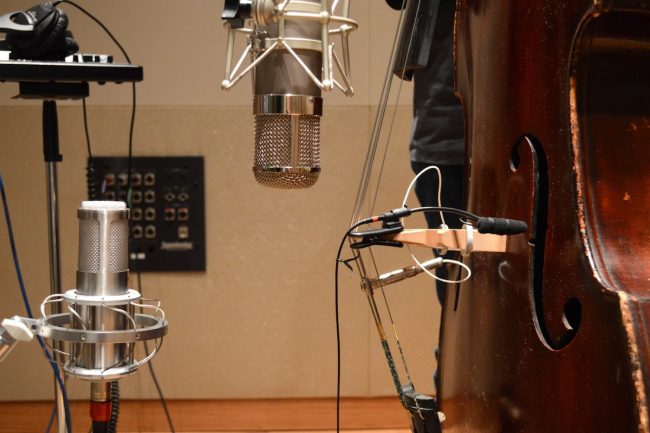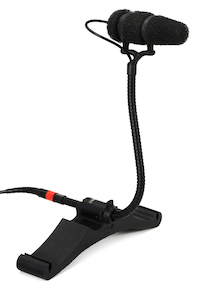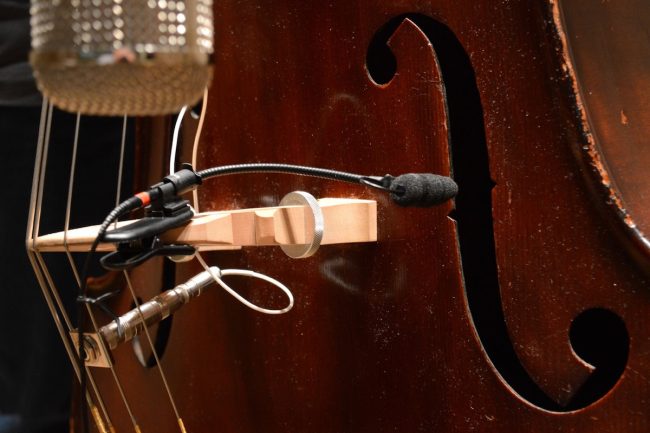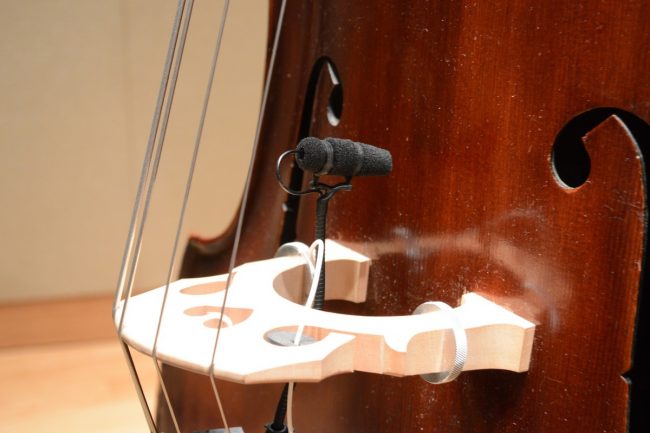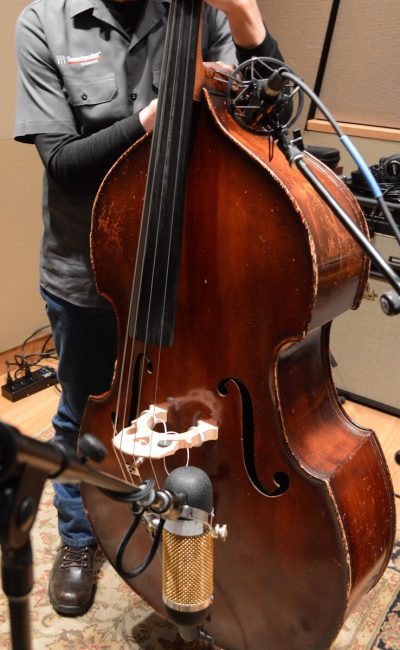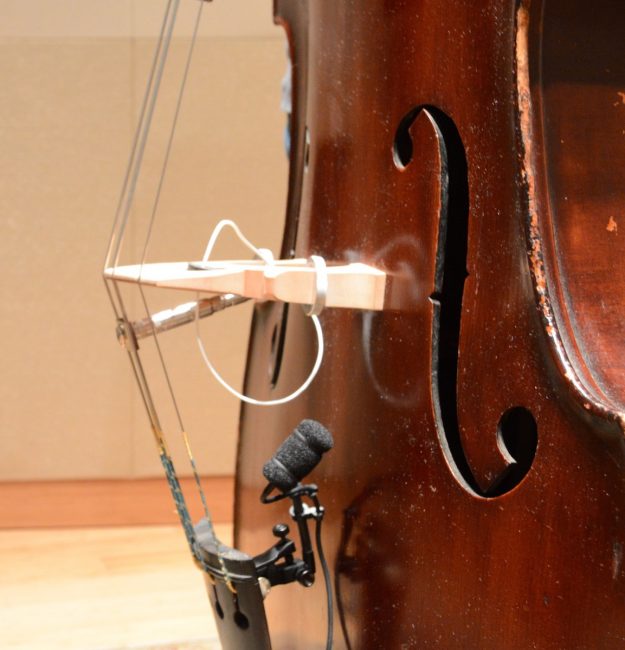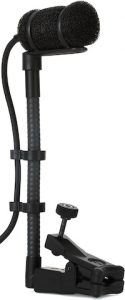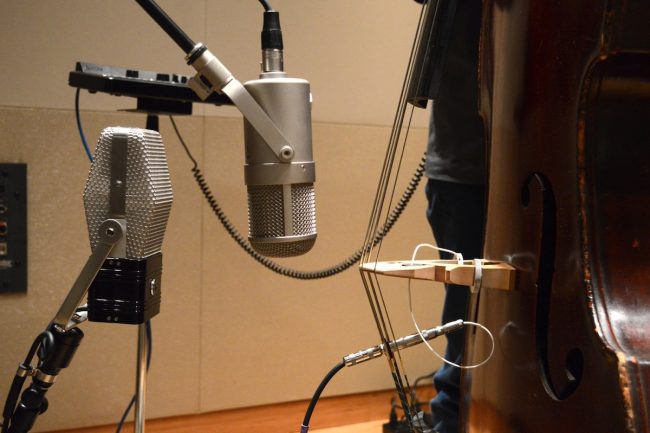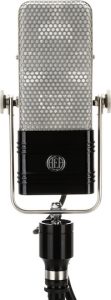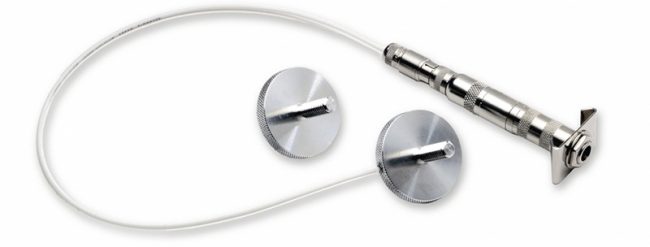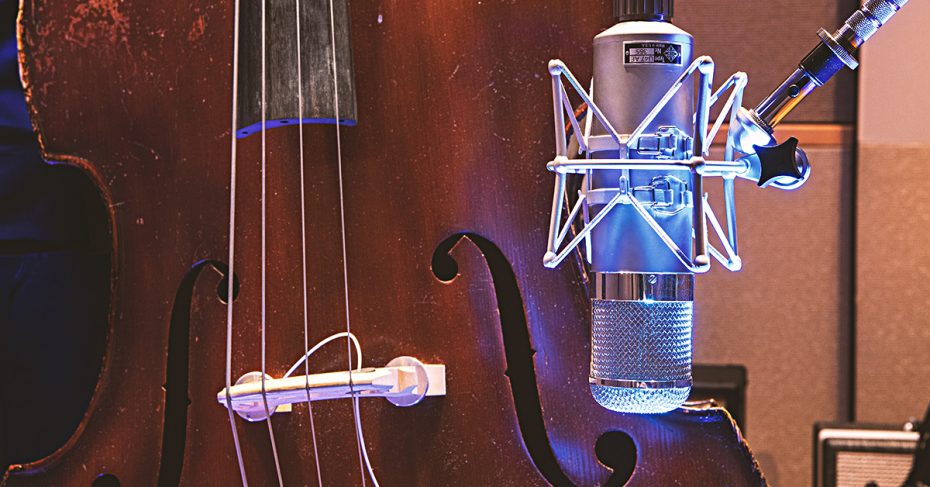
There are lots of instruments that are challenging to mic and record. For me, the upright bass (or double bass) is right up near the top of that list. Part of the reason it’s so challenging to capture is due to the low-frequency range of the instrument. Then, there’s the real estate that the instrument covers (six feet tall and two feet wide). There are so many mic placements possible across the body and making even tiny changes in the mic position (as small as a quarter of an inch) can drastically change the sound. So, what mic and/or position sounds the best? Well, that depends. But I wanted to share some of the options I’ve used and let you hear them, so I headed into the studio to audition a handful of mics.
Two Bass Players Walk into a Studio…
First, let me give you some background; in a previous life, I was a bass player. In high school, I was loaned a double bass and then drafted to play in a wind ensemble. It sounded exciting and challenging (“How hard can it be?”) until I realized the bass wouldn’t fit in my car unless I rolled down the back window and let the headstock hang out the window. Okay, it was maybe more of an adventure than I anticipated. Over the next few years, I played with several groups, and then I went to Baylor University on a bass scholarship and played with the Baylor Symphony my freshman year, before taking off to Nashville to pursue my engineering career. All that to say, I have firsthand experience in what a double bass should sound like.
Second, I enlisted Sweetwater’s resident bassist, Dave Martin, to play bass. He’s a very accomplished player and has been playing upright since he was 14 years old (I won’t tell you how many years that is, but it’s a lot!). He’s a member of the Western Swing Society Hall of Fame, and he’s produced, engineered, or played on recordings by The Time Jumpers, Old Crow Medicine Show, and John England and the Western Swingers, on top of recording and playing on albums by his wife, Carolyn Martin, herself an award-winning member of the Western Swing Society Hall of Fame. The track you’ll hear below is the title cut from Carolyn’s latest CD, Wild West Texas Wind. You can buy a copy here and hear more of her music by visiting her website.
Technical Details
For this session, staff assistant engineer Rachel Leonard helped us set up all the mics in Sweetwater’s Studio B. Since each mic “hears” differently, we positioned each mic where we would typically use it, hence there were a variety of mic placements. Here are the mics we selected and sound samples of each. You’ll hear them soloed, then in context with the backing tracks, and then with Carolyn’s added vocal. All these mics were routed through my Millennia HV-3R mic preamp and recorded into Pro Tools through Avid MTRX converters.
Take a Listen
Telefunken U47
We started with the Telefunken U47, a perennial studio favorite for miking bass, placed just above the bridge and off to the side of the strings, facing the F-hole. It’s a great-sounding mic and really does a fine job capturing a balance between low end and definition. Listen closely to how it sits in the track.
Shure KSM353
The Shure KSM353 ribbon mic is one that Dave frequently uses for bass, and it was positioned level with the bridge but farther away from the bass, due to the proximity effect (boosted low frequencies) that ribbon mics typically exhibit.
DPA d:vote CORE 4099
The DPA d:vote CORE 4099 is a great option for bass players who need to be able to move around onstage or in the studio. It can be fixed to the bass and left in place. Artists such as Esperanza Spalding have used this mic for years with much success. Since the mic is positioned so close to the instrument, the positioning is critical. We experimented with mic positions for quite a while and decided to record two different positions to show you the contrasting sounds. One of the most informative parts of this session was moving the mic around like a wand, pointing at different places on the bass: along the length of the F-hole and up, down, and across the face of the bass. It was fascinating how drastic the differences in mic positions sounded.
We also recorded the 4099 positioned directly in the center of the bass as we’ve typically seen it used. Take a listen and see how different this position sounds.
AEA R84A
The AEA R84A is an active ribbon mic with a figure-8 polar pattern, and its sound accents the low end of the bass.
Warm Audio WA-84
We combined the R84A with the Warm Audio WA-84 small diaphragm condenser positioned up near the top of the body to get more definition. The WA-84 in that position would never be usable by itself but listen to what it sounds like combined with the R84A.
Audio-Technica ATM350UcH
The Audio-Technica ATM350UcH is a very easy and affordable option for miking upright bass; it has a clamp that attaches to the bridge (or to the nut of a string, as we did here) and offers a good sound in a low-profile package.
AEA R44CE
The AEA R44CE is a modern duplicate of the classic RCA 44, a ribbon-mic standard since its introduction in 1932. Its authoritative low end can’t be matched. For this recording, we auditioned it at 18″ and also at 24″ away from the bass, since the low-frequency enhancement of its proximity effect extends nearly four feet from the microphone.
Neumann U 47 FET
The Neumann U 47 FET is a large-diaphragm condenser and a great, all-around mic for vocals, guitar, drums, and amps; and it sounds very good on upright bass. Take a listen.
Fishman Full Circle Bass Pickup
We didn’t set out to talk about pickups in this article, but since Dave has the Fishman Full Circle pickup on his bass, we decided to give it a shot. Take a listen. It’s certainly a usable option, and the advantage is that you won’t have to worry about feedback in a live situation.
Shure SM57
While not a technique I’d ever use in the studio, I’ve seen it used onstage, probably because it’s easy and uses things that are readily available in any bar or venue, like a Shure SM57 and a dish towel. Dave and I both commented when listening to this: “That’s a sound I’ve definitely heard before.”
Conclusion
It’s really fascinating how all the mics and placements can sound so different from each other and then, when you put them into the track, to see how they fit with the other instruments and the voice. If you need help picking out the perfect mic for your upright bass, call your Sweetwater Sales Engineer at (800) 222-4700.


